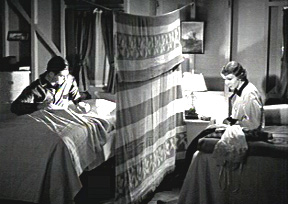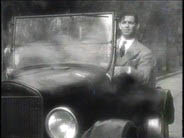Home
Actor/Spectator Home
Aristophanes' The Birds
Charlie Chaplin in The Immigrant
Menander's Perikeiromene
Frank Capra's It Happened One Night
Plautus'
Poenulus (Towelheads)
Bob Hope & Bing Crosby in
Road to Morocco
Conclusion
Photo Credits
|
Frank Capra's
It Happened One Night
|
|
|
Our group decided that in the movie, It Happened One Night, there was a bit more actor/spectator interaction. With this film, however, there is less facial acting with the characters, which means the audience does not always know what the actor is thinking. In comparison with Charlie Chaplin's movies from the week before, the facial interaction with the audience is a lot less. In this case, the audience must guess the actions that go with the words. However, the movie still has the classic one liners and snappy wit characteristic of the movies from back then.
|
| We also felt, at certain points in the movie the audience knew more than the actors. This could be a good thing in terms of actor/spectator interaction. It means the actors are doing their jobs and allowing the audience to come to their own conclusions. |
| For instance, when Peter Warne is on the phone with his boss and he is fired, he continues to 'talk' to the boss as if he were on the phone. We, as the audience, along with Peter, are the only ones who truly know that he has been fired. Another example is when Ellen gets her suitcase stolen, and she doesn’t even notice. She is not paying attention to what happens around her. |
|

|
The best example of the audience being in the know while the actors are not would be the scene in which Ellen professes her love for Peter and then he runs off to write their story. She wakes up to find herself in the cabin with strangers and no sign of Peter, leading her to assume that he abandoned her. |
| As he is driving back to the cabin to pick her up, he sees her in the passing cars with King Wesley and her father. Therefore he assumes that she is leaving him. With the mix-up, no one knows what is true, only the audience does. |
 |
With this movie, we felt that there was more actor/spectator interaction than with the Charlie Chaplin movies, but it is a different interaction. The faces are not as extreme; these actors use their words to connect with the audience. The interaction is more subtle and we, as the audience, are allowed to play along and guess what’s going to happen next. |
|

